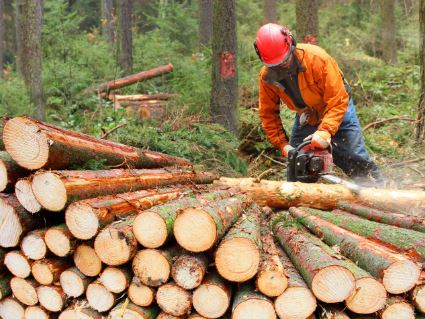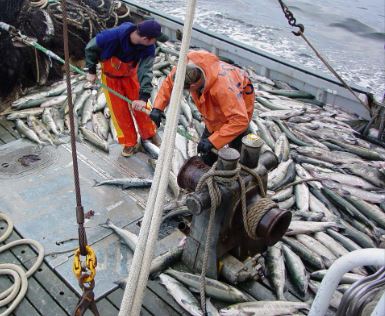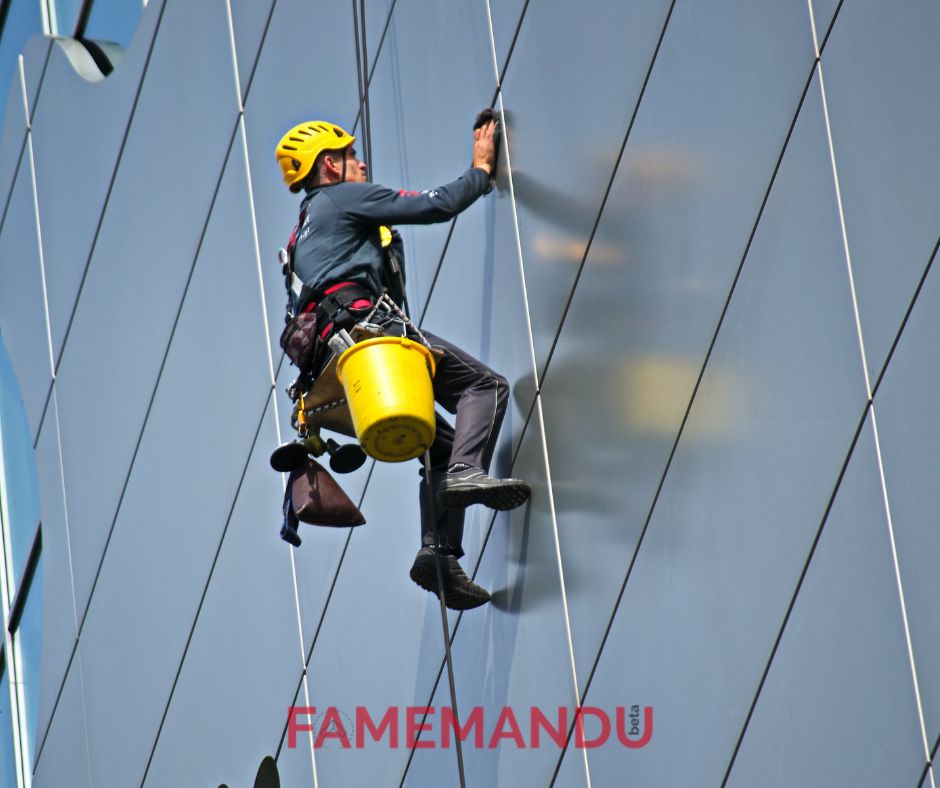Dangerous jobs often involve a high level of risk and exposure to potentially life-threatening situations. The level of danger can vary depending on factors such as the industry, location, safety regulations, and the specific nature of the work. Here are five jobs that are widely considered to be among the most dangerous:
1. Logging Workers
Logging is consistently ranked as one of the most dangerous occupations. Workers face hazards such as falling trees, heavy machinery, and challenging terrain. Accidents in this industry can result in serious injuries or fatalities. Logging often requires the use of heavy equipment such as chainsaws, harvesters, and skidders. Accidents involving these machines, including equipment malfunctions and operator errors, can result in severe injuries. Chainsaws are a primary tool in logging operations and pose a significant risk of cuts and injuries. Improper use or lack of proper safety precautions can lead to serious accidents. It is widely considered one of the most dangerous professions due to the numerous hazards and risks associated with the nature of the work.

Given the inherent dangers in logging, safety measures are crucial. Loggers are typically trained in safety protocols, and they use personal protective equipment (PPE) to minimize the risk of injuries. Additionally, logging companies and regulatory bodies implement strict safety guidelines to mitigate the hazards associated with the industry. Despite these measures, the risks remain, making logging a challenging and perilous profession.
2. Fishermen/Fishing Industry Workers
Fishing is a perilous profession, with risks including harsh weather conditions, heavy equipment, long hours, and the unpredictability of the open sea. Accidents, drowning, and extreme weather events contribute to the high danger level. The physical demands of hauling in heavy nets, sorting and processing catch, and performing other manual tasks contribute to the risk of musculoskeletal injuries. Fishermen can fall overboard during routine activities or in adverse weather conditions. Cold water temperatures and the difficulty of recovering a person from the sea increase the risk of fatalities. The sea is inherently unpredictable, and unexpected events such as rogue waves or sudden changes in weather can pose serious threats to fishermen.

To address these risks, safety measures and regulations are implemented, including the use of personal flotation devices, safety training, and adherence to safety protocols. Despite these measures, fishing remains a hazardous occupation, and efforts are ongoing to improve safety practices and technologies in the industry.
3. Aircraft Pilots and Flight Engineers
Piloting aircraft, especially in challenging conditions or war zones, involves inherent risks. The aviation industry is subject to accidents, crashes, and technical failures, making it a high-stakes occupation. Aircraft accidents, though rare, can have severe consequences. Factors such as mechanical failures, adverse weather conditions, and human error can contribute to accidents. Pilots and flight crews may face the risk of terrorism, hijacking, or other security threats, particularly in regions of geopolitical instability. Pilots may experience stress related to the operational demands of flying, including air traffic control communications, weather challenges, and navigating complex airspace.

Aviation is one of the most regulated industries, and safety is a top priority. Strict training requirements, thorough pre-flight checks, advanced technology, and constant communication with air traffic control contribute to the overall safety of air travel. Pilots undergo rigorous training and recurrent assessments to maintain their skills and knowledge, and aviation authorities continuously work to improve safety standards and protocols. Despite the challenges, air travel remains one of the safest modes of transportation.
4. Roofers
Roofing work is physically demanding and exposes workers to the risk of falls from heights. Inclement weather, slippery surfaces, and the use of heavy equipment contribute to the high rate of injuries and fatalities in this profession. Working on roofs exposes roofers to the risk of falls. Falls from ladders, scaffolding, or the roof itself can result in serious injuries or fatalities. Roofers may encounter unstable or uneven surfaces, which can lead to slips, trips, and falls. During hot weather, roofers are at risk of heat-related illnesses, such as heat exhaustion and heatstroke. Roofers use various tools and equipment, including power tools and sharp objects. Accidents can occur if tools are not used properly or if equipment malfunctions.

To mitigate these risks, roofers are encouraged to use personal protective equipment (PPE), follow safety protocols, and undergo proper training.
5. Construction Workers
Construction sites pose numerous risks, including falls, machinery accidents, electrical hazards, and exposure to toxic substances. Construction workers face a range of dangers, and the job requires strict adherence to safety protocol. Working at elevated heights on scaffolding, ladders, or roofs exposes construction workers to the risk of falls, which can result in severe injuries or death. Electrical wiring, power lines, and equipment on construction sites pose risks of electrical shocks and electrocution. Improper handling or contact with live wires can be dangerous. Construction sites use heavy machinery such as cranes, bulldozers, and excavators. Accidents involving the operation of these machines can result in serious injuries or fatalities.

To enhance safety in construction, it’s crucial for employers to prioritize and enforce safety protocols, provide adequate training, and ensure compliance with regulations. Construction workers should also actively participate in safety training, use PPE, and report unsafe conditions to mitigate risks on the job site. Despite the risks, effective safety measures can significantly reduce the likelihood of accidents in the construction industry.
It’s important to note that safety measures, regulations, and technology advancements play a crucial role in mitigating risks in these occupations. Despite the inherent dangers, many individuals in these professions take precautions and undergo extensive training to minimize the likelihood of accidents.






Leave a Reply